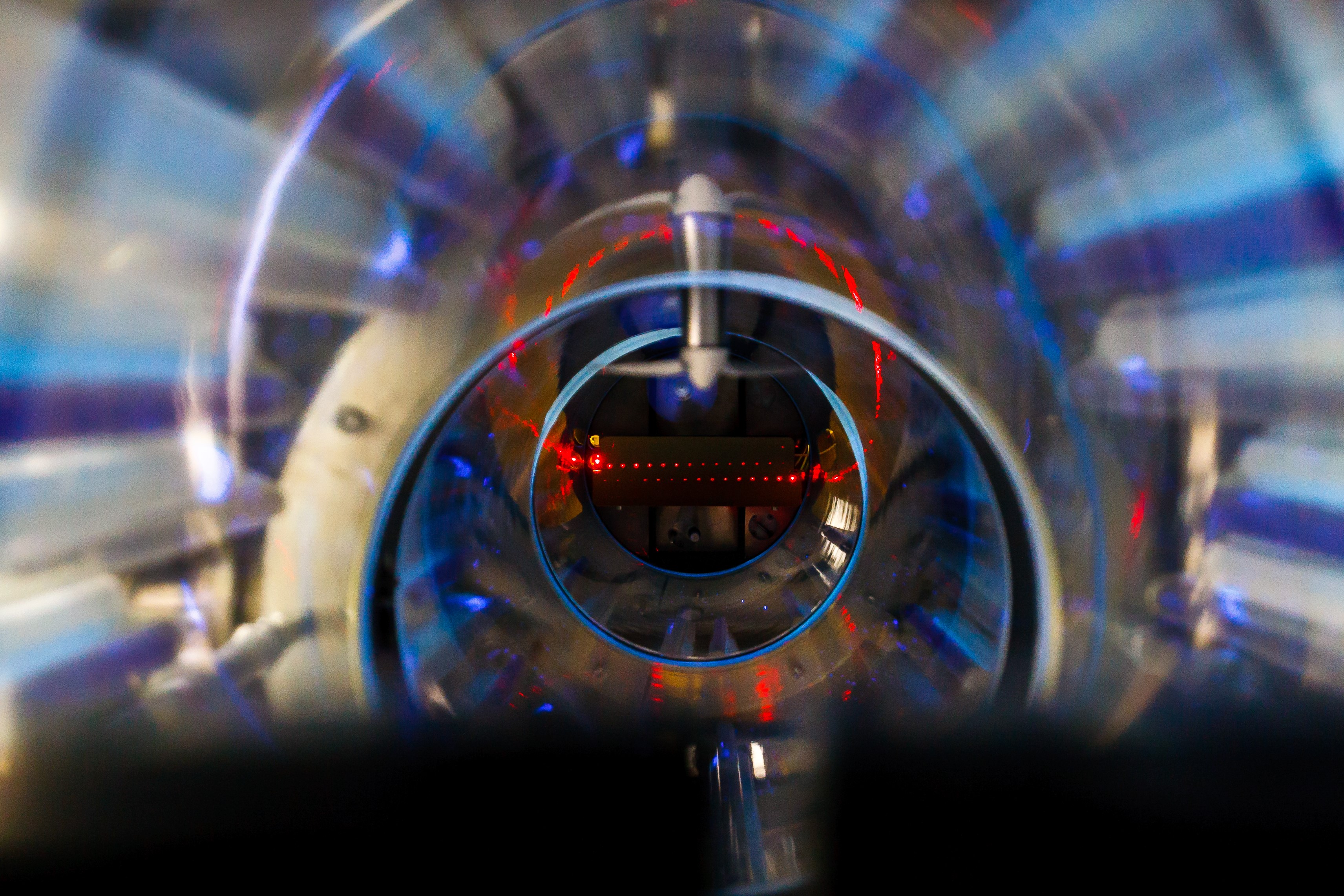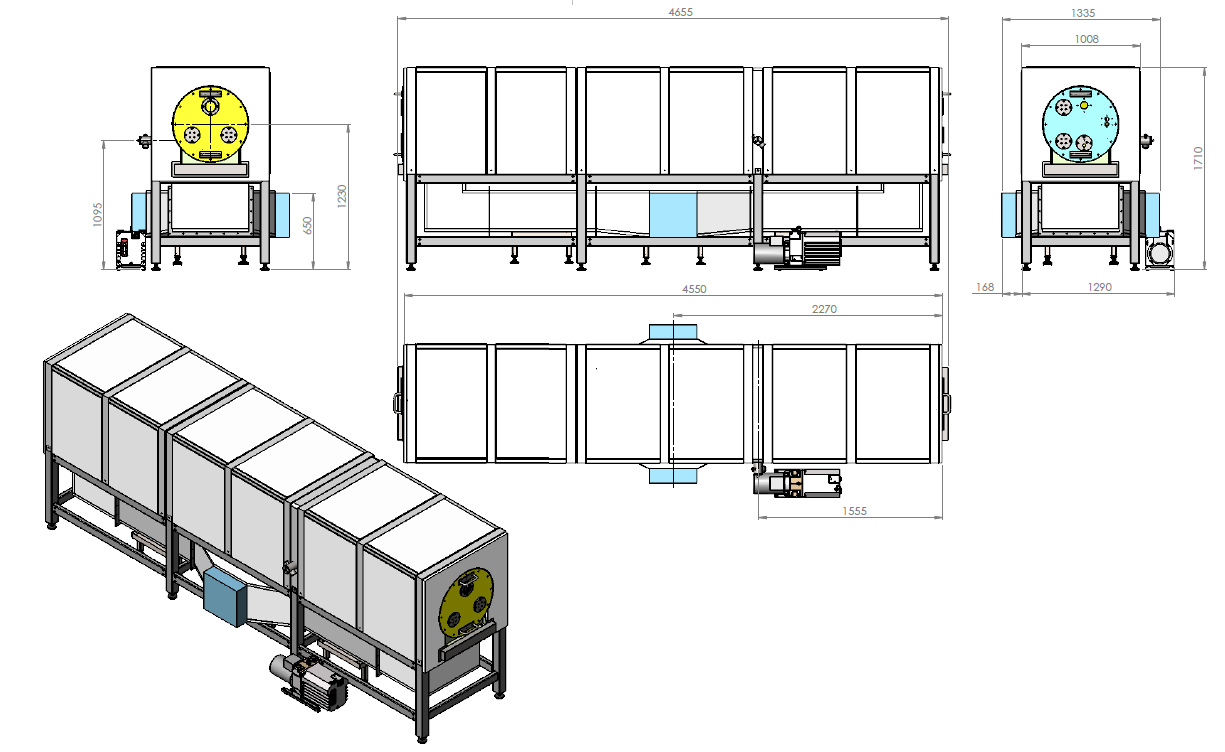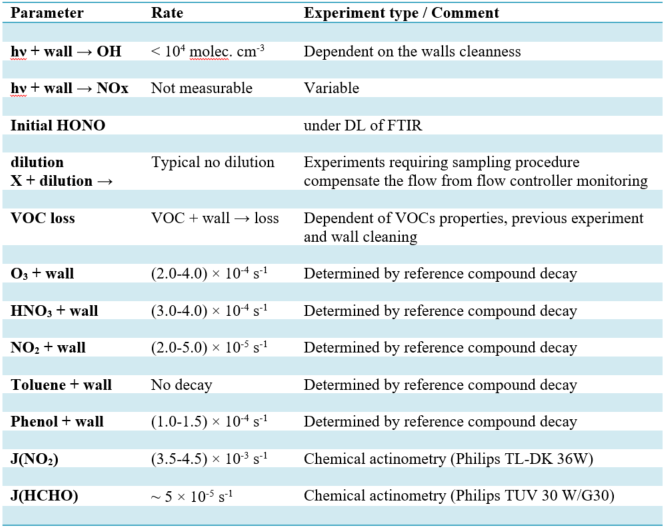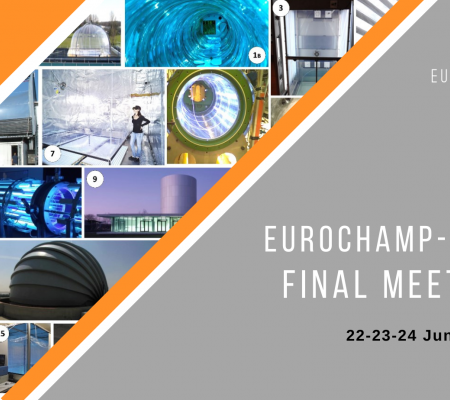| General information | |
| Access mode | Physical access |
| Infrastructure name and acronym | Iintegrated Centre of Environmental Science Studies in the North East Region (of Romania), (CERNESIM) |
| Photos |
  |
| Location | Iasi, Romania
47.1741° N, 27.5723° E |
| Website | https://www.erris.gov.ro/cernesim.uaic.ro |
| Legal name of organisation operating the infrastructure | Alexandru Ioan Cuza University of Iasi |
| Description of the infrastructure | |
| Brief general description of the infrastructure to which access is offered |
The indoor ESC-Q-UAIC chamber is a closed cylindrical vessel of internal dimensions of 0.48 m diameter and 4.2 m length. The reactor volume is of 760 L and the ratio of interior surface to volume is about 8.8 m-1. This rigid reactor is made of three quartz tubes connected by flanges and is vacuum compatible. It can be operated over a range of pressure from 5×10-3 to 1200 mbar. The chamber body is mounted on a steel framework with help of six adjustable anti-vibrating stands in order to limit the vibration effects coming from the ground level and the pumping system. The chamber is connected to the ground to prevent any electrical charge build-up. It is closed at both ends by stainless steel flanges with appropriate insertions for reactants and bath gases inlet systems, pressure and temperature measurement units. Sampling lines made either of PTFE or stainless steel are appropriately disposed for on-line/off-line measurements of various chemical parameters (gaseous or aerosol phase products). A technical description (vacuum system, homogeneous mixing, black-light lamps and actinic lamps for irradiation, pressure, temperature and relative humidity measuring systems, Fourier Transform Infra-Red spectrometer (FT-IR) interfaced with a multiple White path cell giving a total optical path length of (492 ± 0.2) m of the chamber can be found at the http://erris.gov.ro/cernesim.uaic.ro. The ESC-Q-UAIC chamber is equipped with a large panel of analytical instruments dedicated to gas and particulate measurements as well as instruments for monitoring the physical parameters of the chamber. However, a number of available ports provide space for the connection of other instruments which can be temporarily required to address specific scientific issues. Off and on line analyses can be achieved by using the wide range of conventional analytical equipments (http://erris.gov.ro/cernesim.uaic.ro). |
| Services currently offered by the infrastructure and its research environment |
All analytical, atmospheric measurement and testing facilities, built around the ESC-Q-UAIC chamber, may offer services for researchers with interest in:
The infrastructure built around the ESC-Q-UAIC chamber is already included into Registry of the Romanian Research Infrastructures, a booking gate for research infrastructure services. Taking into account the uniqueness character of the ESC-Q-UAIC chamber’s state-of-the-art facilities (suitable for studying the physics and chemistry of various pollutants under simulated atmosphere), at both the Romanian and Eastern European level, emphasise is given to the idea that this infrastructure can enhance and strengthen researchers interest for high-quality investigation. It is envisaged to enable researches interest, especially from this region of Europe, to fulfil their main scientific task and fruitfully to accompany within their efforts to respond to a number of challenges arisen in recent decades in this important research area. |
| Modalities of access and support offered under EUROCHAMP-2020 | |
| Typical duration of work |
The ESC-Q-UAIC infrastructure offers availability to be involved in the following research tasks:
|
| Community/user type served |
The ESC-Q-UAIC infrastructure offers its availability to be easily accessed by users from the academic sector, experts and young researchers, PhD or master students. Additionally, activities to rise up the interest of SMEs to access the ESC-Q-UAIC infrastructure are envisaged. In particular the SMEs that are interested on developing and testing new equipments for monitoring atmospheric pollutants or other analytical equipments are included under our main target. |
| Scientific and technical support offered |
The research team (academic staff) presently operating with the ESC-Q-UAIC infrastructure may offer scientific and technical support in the following areas:
|
| Logistic and administrative support offered |
The ESC-Q-UAIC environmental simulation chamber is part of the laboratory that has been created for the investigation of physical and chemical processes from atmosphere. This infrastructure was settled up in the “Alexandru Ioan Cuza” University of Iasi (UAIC), the oldest university in Romania and a higher education institution with tradition. Through the achievements realized at both educational and scientific level, UAIC has gained national and international recognition integrating itself into the circuit of European values in the academic and scientific field (www.uaic.ro). With more than 38000 students and 900 teaching staff, the university enjoys an important prestige, having collaborations with over 250 universities and research institutes from abroad. The “Alexandru Ioan Cuza” University of Iasi is a member of some of the most important university associations and networks: the Coimbra Group, EUA – European University Association, Utrecht Network, IAU – International Association of Universities, AUF – the University Francophony Agency and RUFAC – Francophone Universities Network. These allow continuously undertaking the exchange experience, student, researchers and professor mobility and the combined achievement of some academic, research or strategic programs. The standard package of the university administrative strategy, usually offered to all visitors, will be available also for the ESC-Q-UAIC users. The package includes:
For the logistic support required by users scientific purposes, ESC-Q-UAIC unit offers availability of exploiting:
|
| Person in charge of access provision at the infrastructure |
Prof. dr. Romeo-Iulian OLARIU Professor in the Department of Chemistry, Coordinator of CERNESIM “Alexandru Ioan Cuza” University of Iasi, oromeo@uaic.ro |
| Extended technical information for ESC-Q-UAIC temperature control and regulation system | |
| Physical description | Additional our smog chamber is now equipped with a temperature control and regulation system that allows the desired experimental conditions to be maintained at a certain temperature value ranging from 5 to 40 degree Celsius. This system was developed during 2017 under a national project (PN-III-P2-2.1.-PED-2016-0924 contract no. 78PED/2017, https://sites.google.com/site/devtrec2017/) funded by Executive Unit for Financing Higher Education, Research, Development and Innovation (UEFISCDI) subordinated to the Ministry of National Education.
|
| Mechanical description | A schematic diagram of the new system is shown in the diagram below: The system include a cooling fluid-fluid group, three cooling modules batteries (one for each quartz tube), a preparation and storage group for air, insulation and sealing the ESC-Q-UAIC chamber for forced ventilation and injection of dried and filtered air, an automat thermostats loop and air exchange. |
| Irradiation spectra | The average irradiation spectrum measured in the ESC-Q-UAIC camera using only 365 nm lamps is depicted in the figure below. The data have been obtained by using a calibrated LICOR LI-1800 spectroradiometer borrowed from the CNRS-LISA laboratory.
J(NO2)= (2,94±0,20) ×10-3 s-1 (measured by monitoring the loss of NO2 (5.27ppmv) under irradiated conditions (365 nm lamps) in N2 using long path FT-IR spectroscopy as analytical tool); |
| Aerosols lifetime | The investigations for the secondary organic aerosol formation are performed to a less extent in ESC-Q-UAIC chamber due to the size and chamber particularities. The SOA wall deposition is measured for any experiment individually. The SOA composition is determined from filter (dry) and impinger (wet) sampling. |
| Auxiliary mechanism | Photolysis rate coefficients: J(NO2) = (3.5-4.5) × 10-3 s-1 (Philips TL-DK 36W) J(HCHO) ~ 5 × 10-5 s-1 (Philips TUV 30 W/G30) Wall Loss Rate Coefficients: k(O3)= (4.5 – 7.5) x 10-4 s-1 Wall loss less than 1% in 30 min (virtually no wall loss) for low chain alkanes and alkenes.Measurable wall loss for organic acids, oxygenated VOCs, nitroaromatics. Wall loss is checked for any compound prior measurement and determined by measured decay of pure compounds  |
| Description paper | Ongoing |





